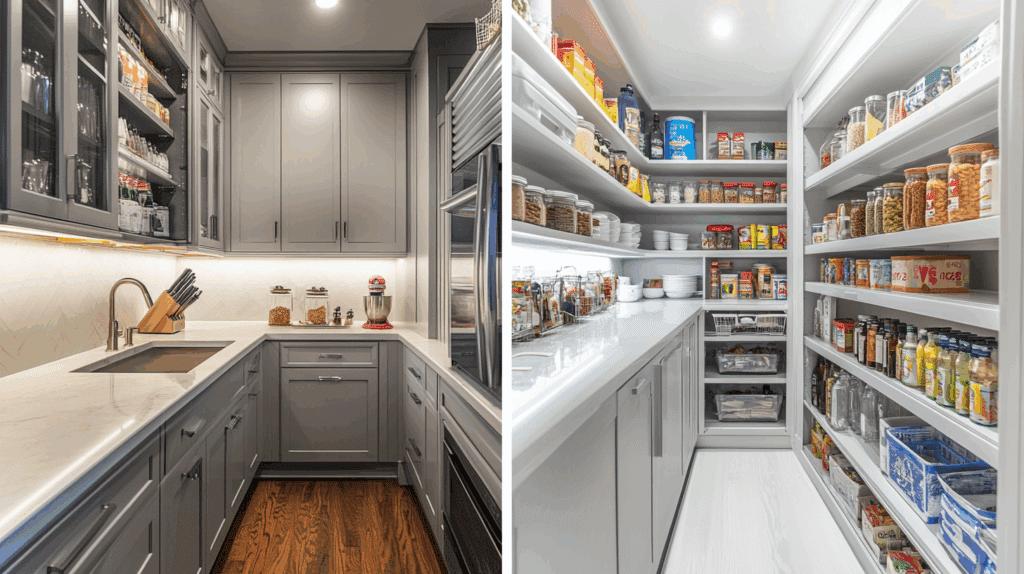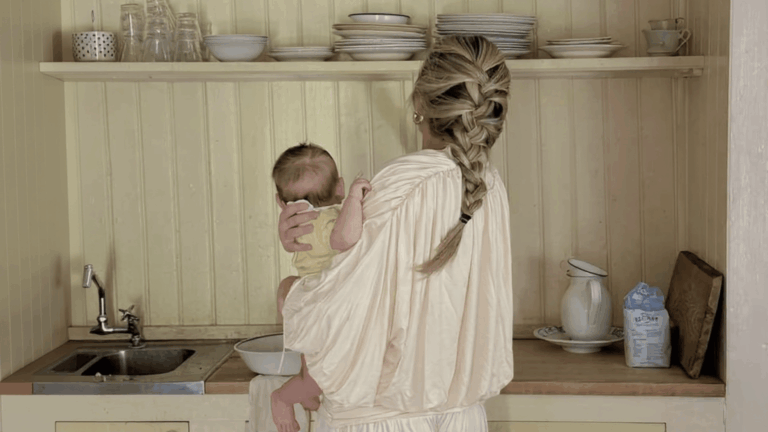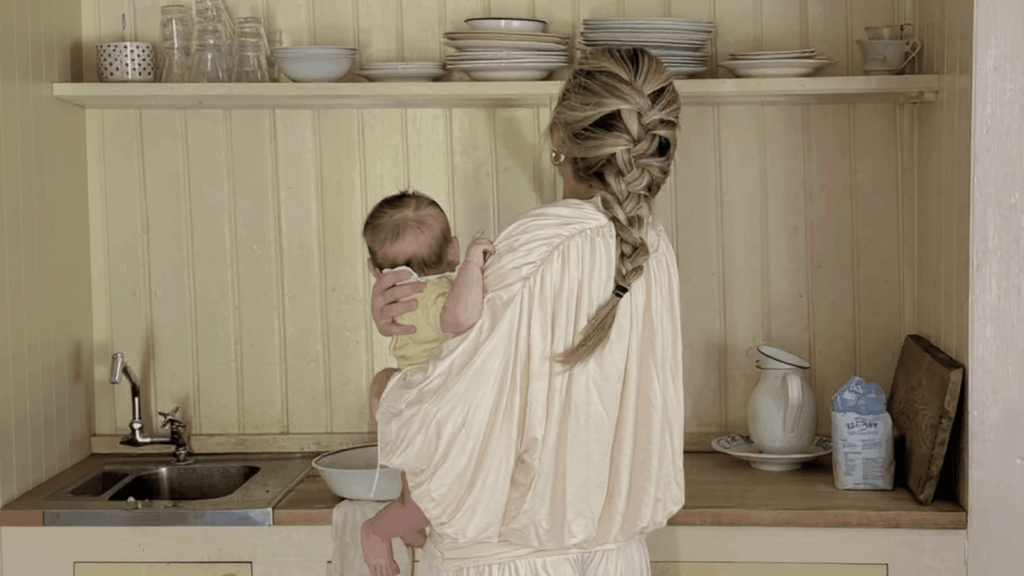Got pantry problems? Most homeowners feel frustrated when trying to choose between pantry styles.
The morning rush turns chaotic with items hidden behind others, and meal prep becomes a time-consuming mess when you can’t find what you need.
However, the right pantry style can fix these issues. Butlers pantry vs walk in pantry, each offers unique benefits that match different kitchen layouts and household needs.
Let’s look at what makes each type of pantry special.
What is a Butler’s Pantry?
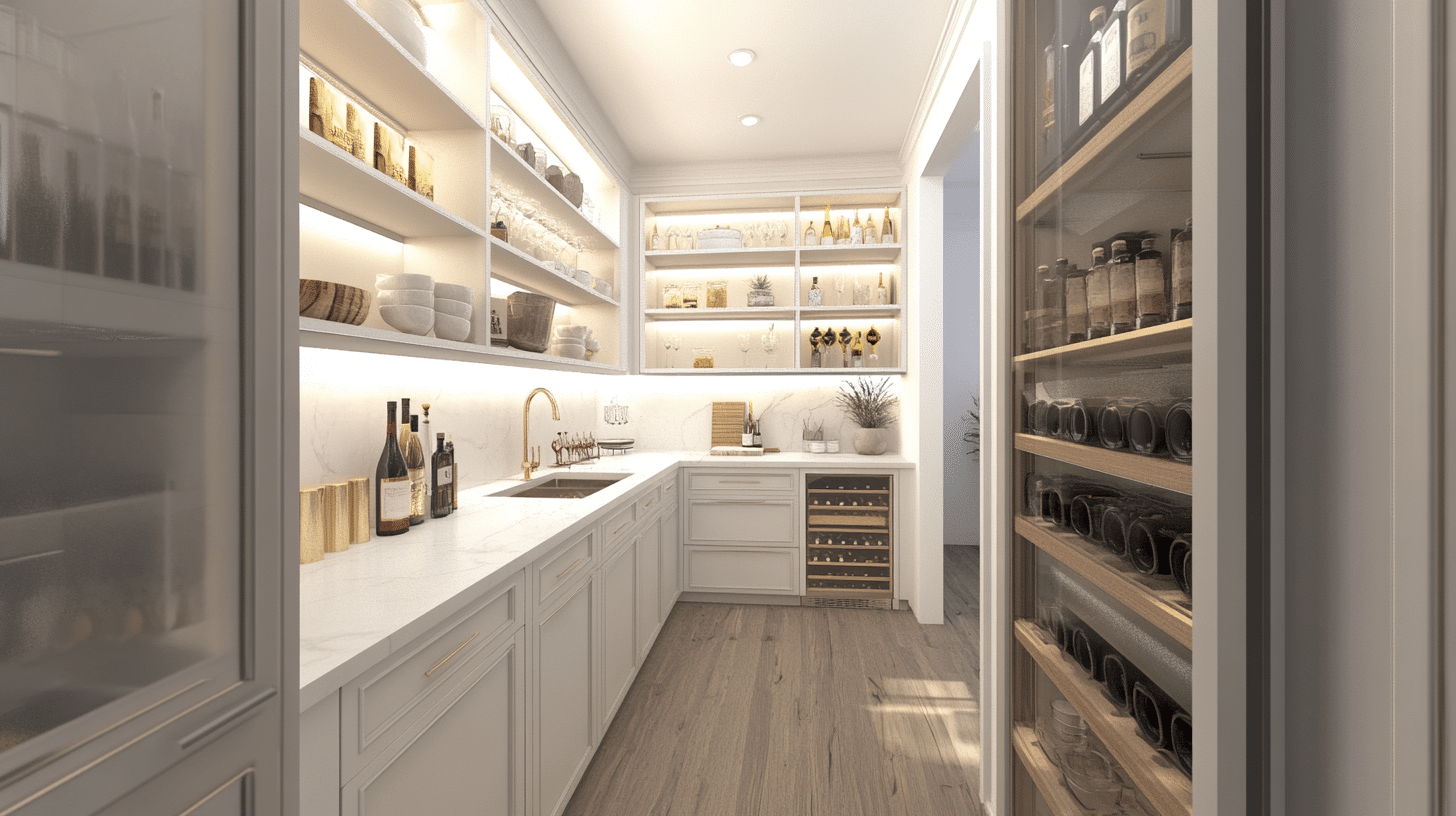
A butler’s pantry is a small room or area between the kitchen and dining room. In modern homes, it functions as a secondary food prep and storage space.
Unlike regular pantries, Butler’s pantries include work surfaces and often act as a transition zone for serving meals. They typically feature countertops for food prep, cabinets for storage, and sometimes a sink for washing dishes.
These spaces come in various styles, from traditional wooden designs with glass-front cabinets to sleek modern looks with clean lines. The style often matches the main kitchen for a unified look.
What is a Walk-In Pantry?
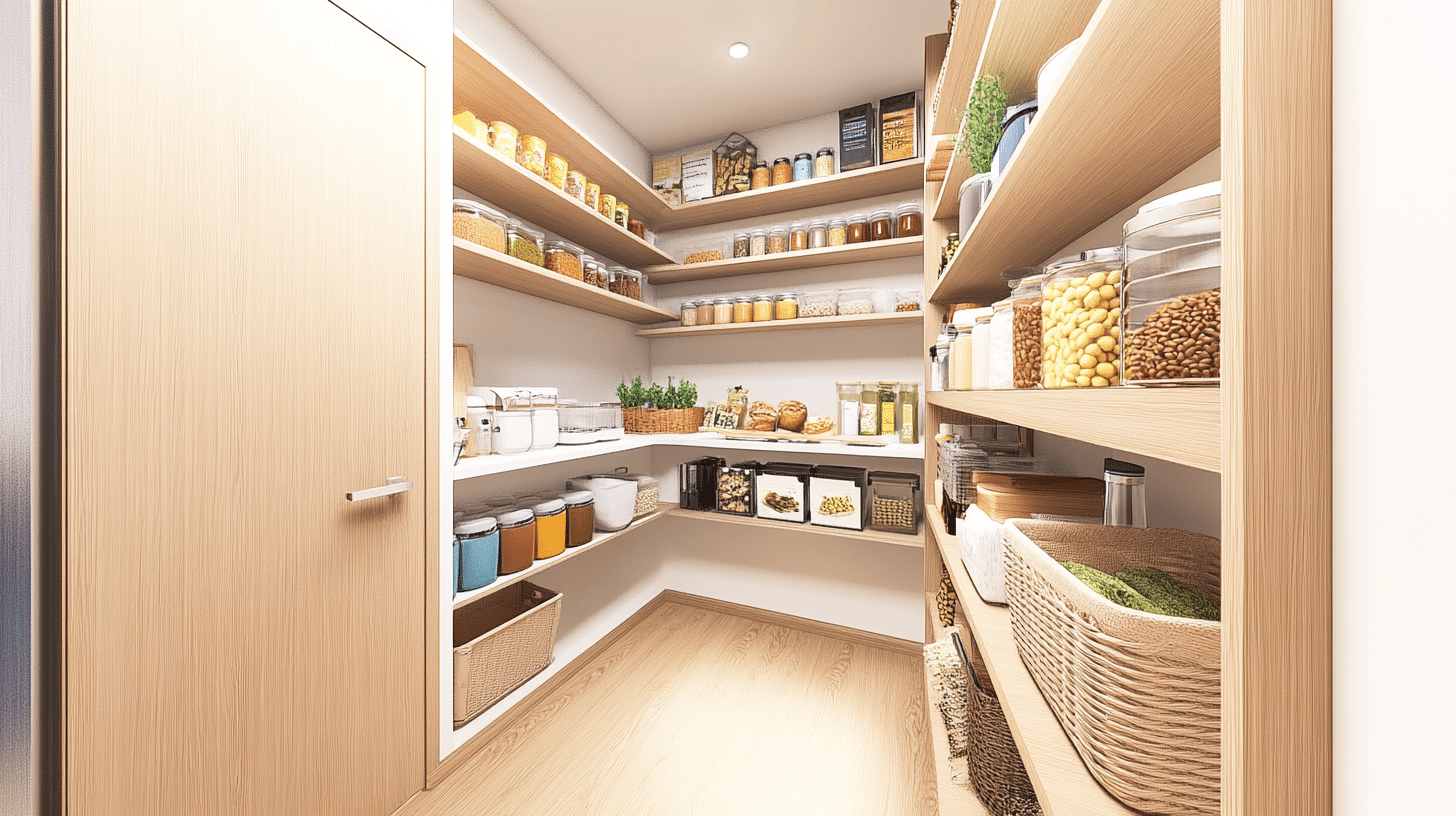
A walk-in pantry is a dedicated room for food storage that’s large enough for a person to step inside. It serves as the main storage area for dry goods, kitchen tools, and small appliances that aren’t used daily.
The biggest perk of walk-in pantries is their storage space. With floor-to-ceiling shelves, homeowners can store bulk items, seasonal cookware, and small appliances in one spot.
The open design makes it easy to see and reach all items at once. For top function, walk-in pantries work best with varied shelving heights, clear containers, and zones for different items.
Effective layouts often include U-shaped or L-shaped shelf designs that use corner spaces well. Even in smaller homes, a closet-sized walk-in pantry with well-planned shelves can hold more than standard cabinets and keep the kitchen tidy.
Comparing Butlers Pantry vs Walk In Pantry Features
Knowing how these pantry types differ can help you make the right choice for your home. Let’s examine the main factors of butlers pantry vs walk in pantry, which is the best choice for you.
Size Differences
Walk-in pantries typically need more square footage than butler’s pantries. A standard walk-in might measure 5×5 feet at minimum, with larger ones spanning 10×10 feet or more. This allows for full-body access and movement inside the space.
Butler’s pantries are often smaller, sometimes just 3-4 feet wide, as they’re designed as pass-through areas rather than rooms you stand in. The smaller footprint makes butler’s pantries easier to fit into existing floor plans, especially in older homes where adding a full walk-in might require major changes.
Functionality & Usage
Butler’s pantries shine for hosts who entertain often. They provide a spot to plate dishes, mix drinks, or stage courses before serving. Many include wine storage, glass cabinets for display, and counter space for coffee stations.
Walk-in pantries excel at bulk storage and organization. They keep groceries, small appliances, and cookware in one accessible place. Walk-ins help reduce kitchen clutter and make inventory management easier with everything visible at once.
Aesthetic Appeal
Butler’s pantries often feature more design elements since they’re visible to guests. They typically match or complement the main kitchen with similar finishes, hardware, and lighting. Many include glass-front cabinets, nice backsplashes, and quality countertops.
Walk-in pantries, being primarily functional spaces, often have simpler designs with open shelving rather than cabinets. Since fewer people see them, homeowners may choose more budget-friendly finishes. However, some modern designs turn walk-ins into showpieces with custom shelving, specialty lighting, and themed décor.
Maintenance Requirements
Walk-in pantries need regular cleaning and organizing as items come and go. With more open shelving, dust can gather on both the shelves and stored items. The upside is that all areas are easy to reach for cleaning.
Butler’s pantries have fewer exposed surfaces with more items behind cabinet doors, reducing dust collection. However, they often include sinks or small appliances that need regular maintenance. Any countertop food prep areas must be kept clean to the same standard as the main kitchen.
Cost Comparison
A small walk-in pantry costs between $750 and $2,000 to install, with larger versions ranging from $2,000 to $3,500. These costs cover basic shelving, drywall, doors, and lighting.
Butler’s pantries start around $2,000 but can quickly increase with the addition of plumbing, custom cabinetry, and built-in appliances. High-end butler’s pantries with stone countertops, premium fixtures, and luxury appliances can exceed $8,000.
How to Choose the Right Pantry for Your Home
Choosing between a butler’s pantry and a walk-in pantry depends on your lifestyle, how you use your kitchen, and what matters most to you.
Let’s break down which option might work best for your needs.
Butler’s Pantry: Ideal for Entertainers
A butler’s pantry works like a mini kitchen between your main cooking area and dining space. It provides a hidden spot for meal prep, plating, and cleanup when guests are over.
- Functions like a mini kitchen with a sink, dishwasher, and prep counter.
- Perfect for food staging, prep, and cleanup out of sight.
- Can include special additions like a wine fridge or coffee bar.
- Best for frequent hosts or open-concept homes.
- Requires more space and a higher budget.
Walk-In Pantry: The Storage Powerhouse
A walk-in pantry is a dedicated room for food items and kitchen tools, keeping your main kitchen clean and clutter-free.
- Acts as a walk-in closet for food and kitchen essentials.
- Offers plenty of storage for bulk items, groceries, and small appliances.
- Easier to keep organized, but needs regular upkeep.
- Better for large families or home cooks with many pantry goods.
- More space-efficient than standard cabinets
Smart Design Tips to Upgrade Any Pantry Space
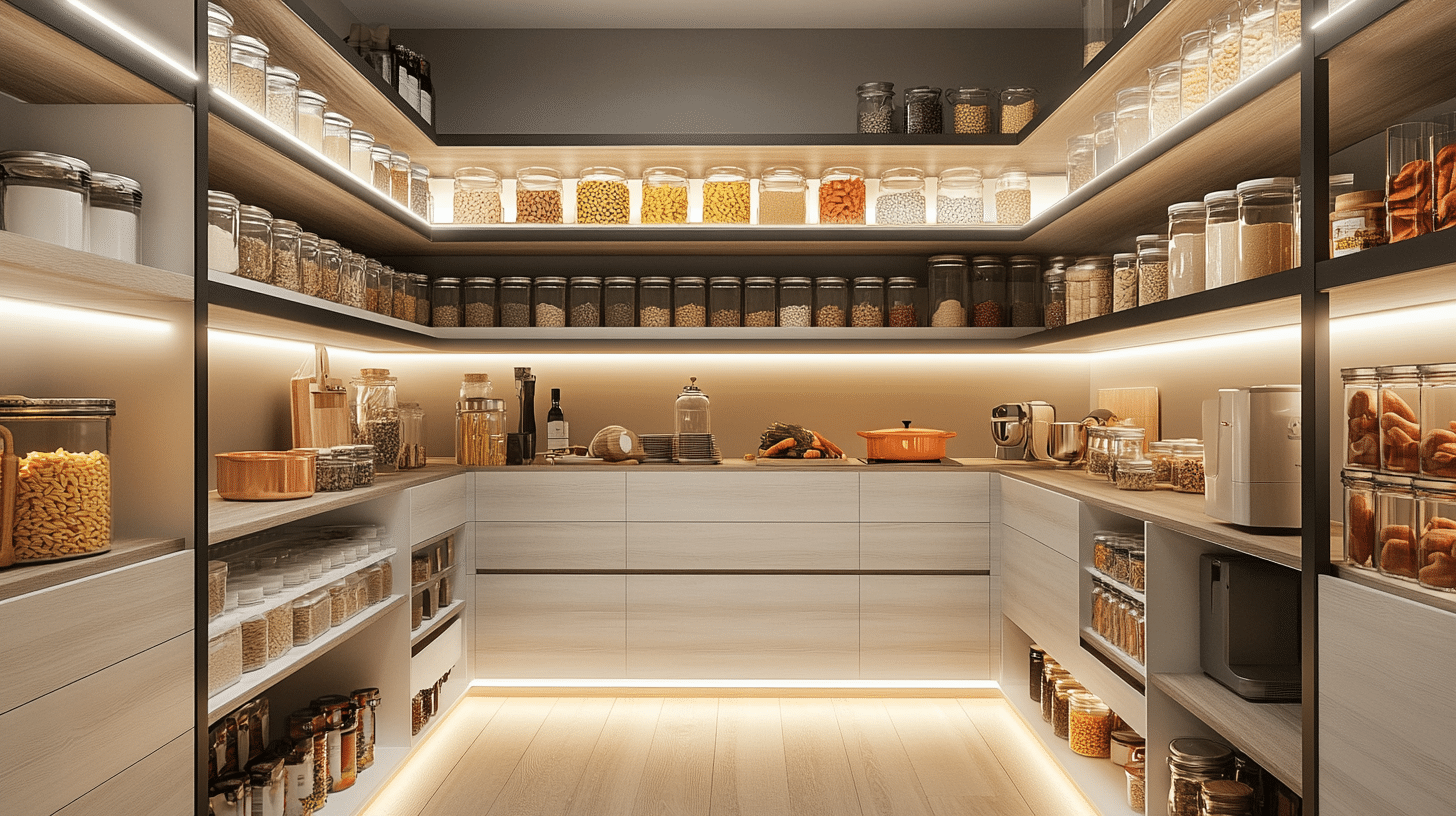
Both pantry styles benefit from thoughtful design touches that boost their usability. These practical add-ons can make your pantry more useful, no matter which type you choose for your home.
- Pull-out shelves and rotating racks make items at the back easily available. These moving parts let you reach canned goods, spices, or small appliances without digging.
- Task lighting turns dark pantries into bright, useful spaces. Under-shelf LED strips light up work areas in butler’s pantries, while motion-sensor lights in walk-ins turn on when you enter. Good lighting helps you find items quickly.
- Glass jars with labels keep dry goods fresh while looking neat. Clear containers show what’s inside and how much remains, making shopping lists easier.
- Built-in appliances in butler’s pantries hide coffee makers, toasters, or microwaves. Adding outlets or charging stations creates a tech-friendly space.
- Vertical storage effectively uses wall height. Tall shelving reaches ceiling space, while hanging racks hold pots, pans, or utensils to free up shelf space.
Compact Pantry Alternatives for Any Kitchen Size
Not every home has space for a full walk-in or butler’s pantry. Luckily, several smaller pantry options can still provide good storage without major renovations.
These choices work well in compact kitchens or when budget limits make larger pantries impractical:
| Storage Option | Description | Key Features |
|---|---|---|
| Wall Pantry Cabinets | Tall, narrow cabinets are placed between standard kitchen cabinetry. | Full-height doors, adjustable shelves, pull-out drawers. |
| Pull-Out Pantry Drawers | Slide-out units fitted between cabinets or appliances, ideal for narrow spaces. | Vertical dividers, space-saving, effective in 6″ widths. |
| Freestanding Pantry Units | Movable storage furniture, like racks or islands that can be placed anywhere in the kitchen. | Flexible setup, movable, wide style range. |
| Corner Pantries | Utilize corner spaces with smart shelving layouts. | L-shaped or rotating shelves maximize unused space. |
| Pantry Closets | Convert small existing closets near the kitchen into pantry spaces with shelving. | Uses existing structure, no major construction needed. |
The Bottom Line
Picking between a butlers pantry vs walk in pantry comes down to how you use your kitchen daily.
When it comes to butlers pantry vs walk in pantry choices, butler’s pantries excel for entertainers who need prep space, while walk-ins offer maximum storage for busy families.
Even homes with space limits can find smaller alternatives that boost kitchen function.
What type of pantry do you have in your home? Share in the comments below what works best for your family or what pantry features you’d love to add to your kitchen!


